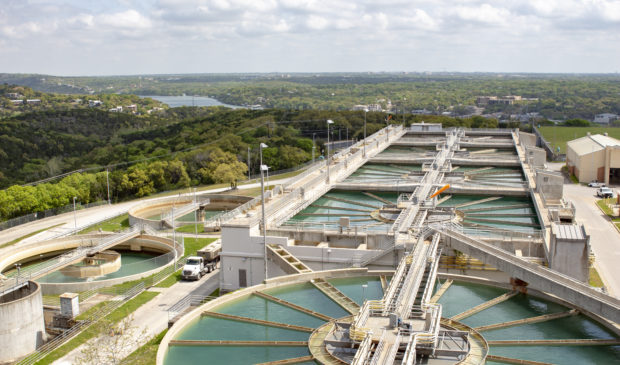Austin Water safeguarding its facilities from wildfire risk
Monday, August 1, 2022 by
Veronica Apodaca As Austin continues to grow, the city is expanding toward wildlands. This creates an increased risk of fire in areas where human development intersects with natural areas, known as the wildland-urban interface.
Austin Water discussed its efforts to mitigate wildfires at the Water and Wastewater Commission’s July 20 meeting. These efforts include assessing its facilities to ensure they are protected from wildfire.
“(We) have about 47,000 acres we manage directly or indirectly, and when a lot of those lands were first acquired 20, 25 years ago, they were kind of in the middle of nowhere … that’s changing rapidly,” Matt Hollon, a division manager with the utility, said in his presentation to the commission.
Hollon said the majority of wildfires are started by people, making the department’s fire prevention efforts necessary as Austin expands toward wildlands. Part of this work is searching for fire hazards in its own facilities throughout the city, including water and wastewater treatment plants.
The assessments were conducted by a team with members from the Austin Fire Department, Austin Water’s emergency management staff and wildlands experts. When evaluating each location, the team had a list of criteria to determine whether a facility was sufficiently fire-resistant. This included determining whether a site featured flammable fencing materials or overgrown vegetation.
With its sites throughout the city having been assessed, the team will now be meeting with Austin Water’s operations group to discuss how to implement changes that will address any concerns about fire safety.
“Our expectation is they’ll be able to bake that into their day-to-day operations,” Hollon said.
The facility that needed the most work was the Ullrich Water Treatment Plant, located on the only site that qualifies as a WUI. The team worked with a contractor to reduce the amount of wildfire fuel surrounding the plant and created a shaded fuel break. This involved the thinning and removal of understory vegetation and ladder fuels, which is any foliage that can allow fire to travel from the ground up into trees.
If a fire does occur at one of the facilities, it is crucial that emergency responders are able to arrive quickly. In order to assist with this, Austin Water is mapping the areas around its facilities so emergency responders know what to expect.
“We want to make sure that they know what is going on in these sites, what’s the topography, and especially what are the routes in and out, where are the gates, where are the roadways … we make sure that they’re really aware,” Hollon said.
In addition to implementing the changes recommended from the facility assessments, Austin Water will also incorporate the projected impact of climate change.
“The game-changer in almost everything everybody is doing these days is climate change,” he said. “We are making sure that as we do our work with the Balcones Canyonlands Preserve and the Water Quality Protection Lands that we include climate change as an important element of how we plan.”
The Austin Monitor’s work is made possible by donations from the community. Though our reporting covers donors from time to time, we are careful to keep business and editorial efforts separate while maintaining transparency. A complete list of donors is available here, and our code of ethics is explained here.
You're a community leader
And we’re honored you look to us for serious, in-depth news. You know a strong community needs local and dedicated watchdog reporting. We’re here for you and that won’t change. Now will you take the powerful next step and support our nonprofit news organization?







